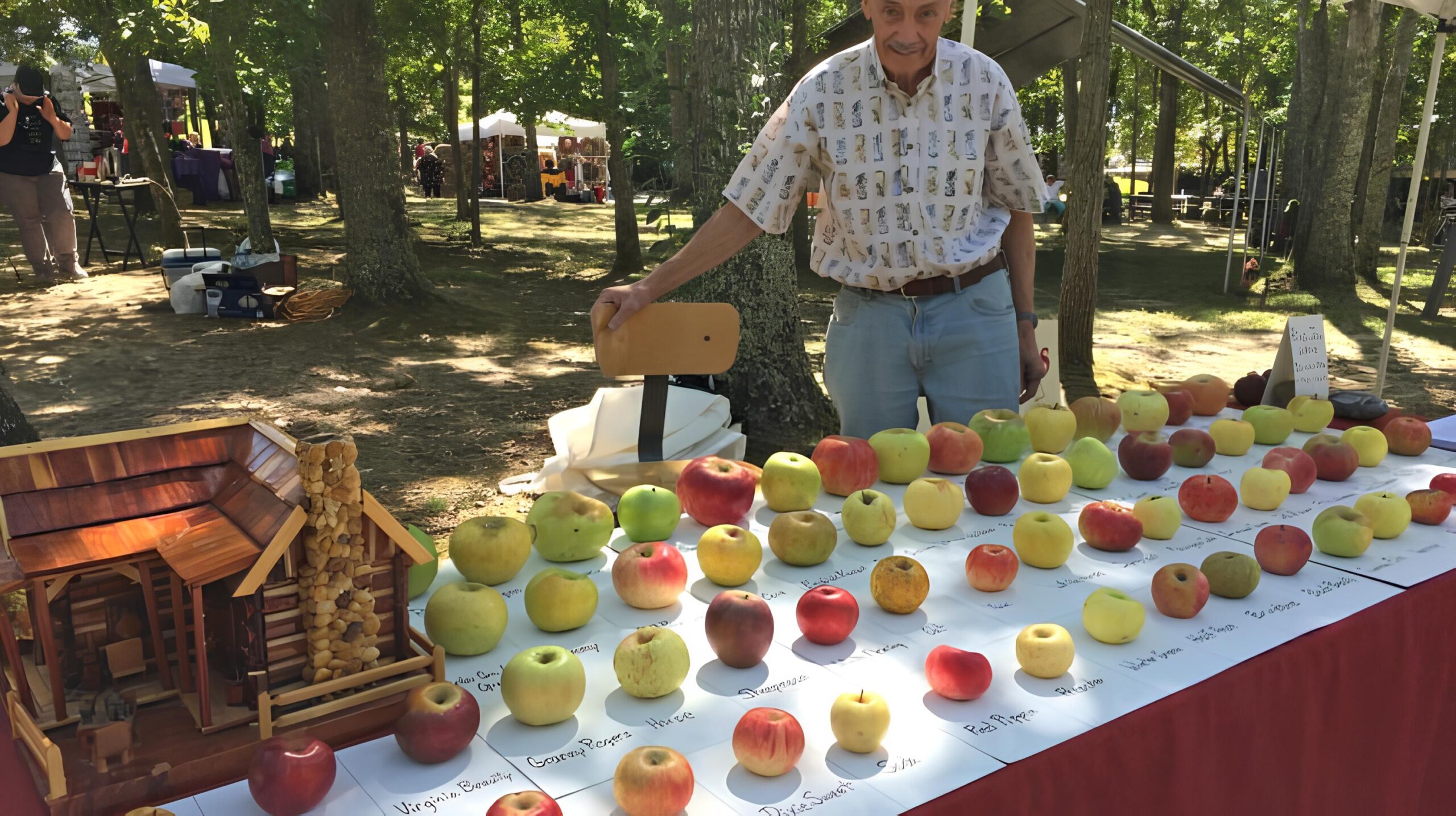Saving over 1,200 vanished apple varieties is not for the faint of heart. It necessitates rigorous planning, perseverance, and research techniques ranging from traditional to unique.
According to Southern Living, here is where Tom Brown of Clemmons, North Carolina, comes into play. He’s transformed his pomological interest into a passionate desire to resurrect the Southeastern United States’ lost gastronomical legacy. He’s leafed through Antebellum-era orchard catalogs, waded through many abandoned orchards, and driven tens of thousands of miles to do this.
But these sacrifices pay off handsomely every time he comes upon an ancient apple tree. Along with the culinary challenge comes the gratification of knowing he’s maintaining a crucial piece of American culture. Not to mention the prestige of tasting an apple that hasn’t been eaten in 50 to 100 years!
Continue reading to find out more about his extraordinary effort to resurrect vanished foodways and a unique element of American history.
Although it’s natural to suppose Brown has always had a passion for Appalachian apples, he didn’t become serious about it until 1998. At a local market, he came upon Maurice Marshall and his impressive collection of apple cultivars. Brown recalls the odd array of fruit on the table, noting the size, color, texture, and flavor variances. Their vibrant names drew his attention as well.

Marshall’s apple selection resembled a true agricultural patchwork, with colorful tones of sunset pink, bright yellow, golden-streaked, and purplish black. Their vivid variation was accompanied by fun names like Bitter Buckingham, Arkansas Black, White Winter Jon, and Billy Sparks Sweetening. He recalls Marshall’s sampling platters with fondness, as well as the extraordinary textures and sensations he encountered when learning about these long-forgotten fruits.
Brown was intrigued by historical apples and wanted to learn more. Marshall’s sample platters provided everything from Jonathans’ rosé wine-colored flesh to Rusty Coats’ honey-like sweetness and pear suppleness. Giant Twenty Ounce apples were crisp with a fruity flavor. Grimes Golden had hints of white pepper and nutmeg, while Etter’s Gold was a semi-firm favorite with notes of grapes and peony bouquets.
Brown began researching after realizing how little he understood about the many apple species that formerly inhabited the Appalachians. What he discovered was both enticing and terrible. Apple varieties used to number in the tens of thousands, with orchards growing over 14,000 different types as late as 1905.
The wide variety of these apples represented the pragmatism of the colonial population. It made more sense to drink cider in a time and place where clean and safe water was scarce. As a result, apples have become the East Coast counterpart of Old World wine grapes, with farmers cultivating impressively diverse homestead apple orchards.

The Appalachian environment was ideal for apple growth, and homesteaders experimented with developing new types tailored to specific purposes such as cider production, cattle finishing, and vinegar production. According to Brown (via Atlas Obscura), “a diverse orchard was fundamental to survival and good eating alike.” According to The Appalachian Voice, apple orchards had a special place in the American garden as one of its most prized achievements.
It’s difficult to envision tens of thousands of types of American apples when most grocery shops barely stock a few. The most common apple species now arose as a result of two characteristics: 1) their quick growth and 2) their capacity to be conserved during long-term storage.
Most small apple orchards had gone out of business by the 1950s. After a few decades, you arrive at the late 1990s. At this period, roughly 11,000 heritage apple varieties no longer existed, and only 11 kinds accounted for 90% of grocery-store sales.
Brown was not about to allow almost 250 years of culinary culture and history fade away. Instead, he made the decision to take action. Brown went hundreds of miles, armed with historical seed catalogs, in search of people who had old trees in their backyards. He was still driven by the need to preserve the past before it was too late. “These were foods that people had once cared deeply about, that had been central to their lives,” he says. It didn’t feel right to just let them die.”
Thinking about this badass from North Carolina who single handedly saved 1,200 types of apples from going into extinction. pic.twitter.com/pTcFaPgDlG
— Lord of Leisure (@BasisOfCulture) May 19, 2022
And he has stayed loyal to his pledge. Brown continues to put in the study and labour to uncover new sorts of apple trees more than 1,000 species later. Most people have been captivated by and open to his work. The collaboration has resulted in the uncovering of several old apple orchards that had been long forgotten by descendants of the original orchardists.
Furthermore, the thrill of discovering a fruit that people haven’t thought about in decades comes with its own set of benefits. “It’s an amazing sensation to save one apple from extinction. It’s really gratifying – and quite addicting!”






